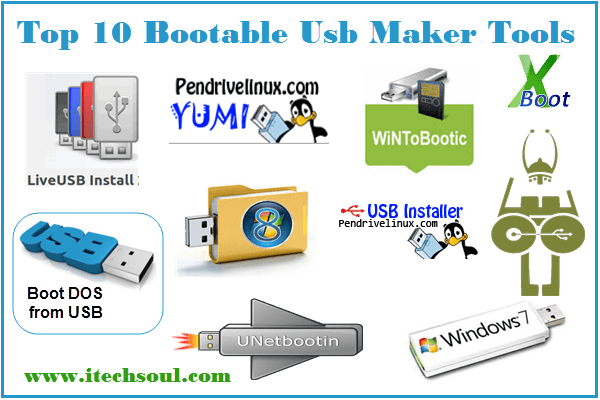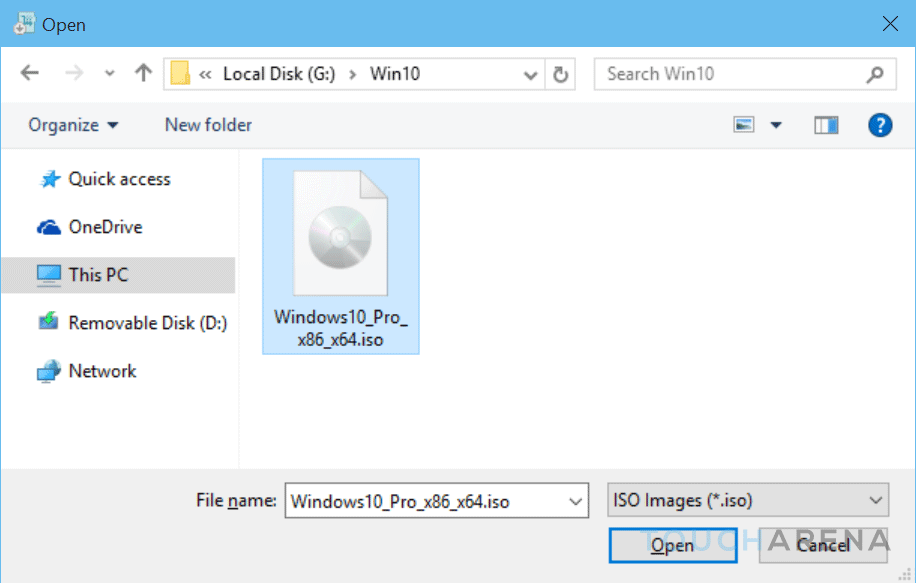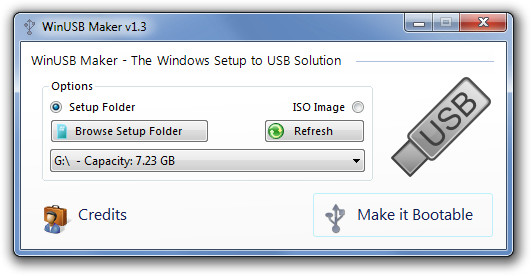
If you get this message from fdisk, you may need to reformat the flash drive when writing the image, by passing -format when writing the stick.

Partition has different physical/logical endings If you get the message Need to have a filesystem label or UUID for your USB device, you need to label the partition: dosfslabel /dev/sdX LIVE. Information: Don't forget to update /etc/fstab, if necessary.

Number Start End Size Type File system Flagsġ 32.3kB 1062MB 1062MB primary fat16 boot Sector size (logical/physical): 512B/512B Welcome to GNU Parted! Type 'help' to view a list of commands.
Bootable usb image tool drivers#
Creating Windows virtual machines using virtIO drivers.Installing virtual operating systems with GNOME Boxes.Getting started with virtualization (libvirt).Upgrading Fedora using the DNF system upgrade.
Bootable usb image tool how to#

Configuring X Window System using the nf file.Installing Chromium or Google Chrome browsers.Installing plugins for playing movies and music.APT command equivalents on Fedora with DNF.Securing the system by keeping it up-to-date.Adding or removing software repositories in Fedora.Finding and installing Linux applications.Creating and using a live installation image.More information can be found in the USB Image Tool FAQ. With the button "Save settings to register" saves changes so that they remain valid after a restart.īelow you see the USB Image Tool Options screen. So this option is only important for a Restore action. You have to make sure that the last part of your original file is empty. The second option of the Options screen (Truncate Oversize images) can be important if the storage space is a little too small for a Restore action. Then you have two buttons at the bottom, Backup and Restore, Rescan shows new devices if they were not already connected when the USB Image Tool was started. A Backup creates an image file on your computer. Select the correct USB device on the left. You can for example use it to copy a VMWARE ESXi USB Flash drive to an image file, so you can restore it if an ESXi update fails. You do need an SD Card reader on your computer. You can use the USB Image Tool if you want to make a backup of your USB Flash Drive or if you want to copy an SD Card to or from a USB Flash Drive.
Bootable usb image tool zip file#
USBit can be downloaded here: USB Image Tool. Download the ZIP file and extract it into an empty directory, default directory is "usbit". More information on how to use Rufus can be found at this one Rufus FAQ. You use Rufus if you want to copy an ISO file to the USB flash drive so that you can boot from it and perform an installation or upgrade.

Create a bootable USB Flash Drive with Rufus and sometimes with USB Image Tool (USBit).


 0 kommentar(er)
0 kommentar(er)
